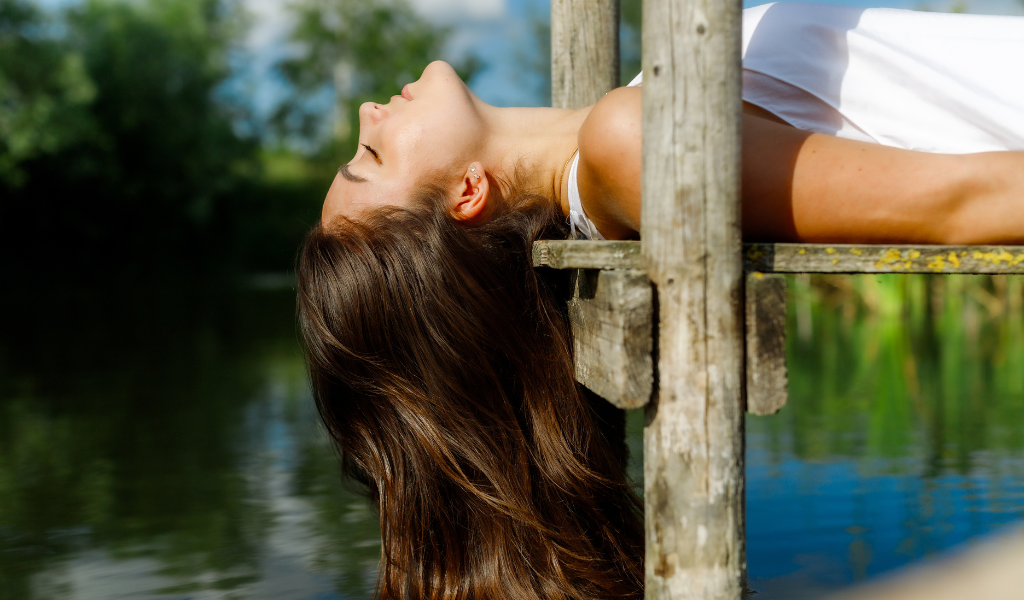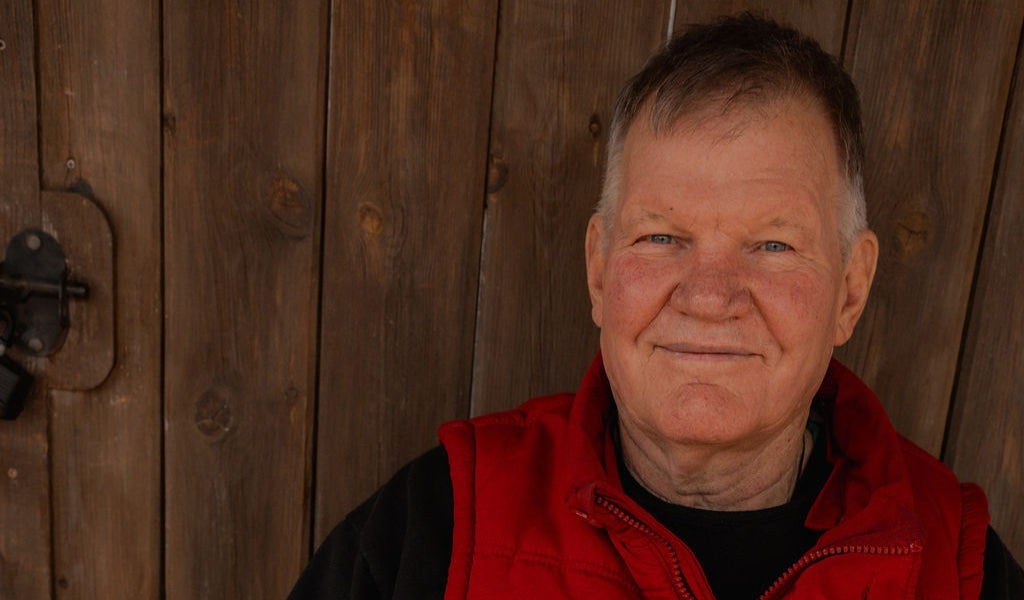Mental health is about reflecting on the invisible forces that shape how we feel, think and cope. At microbz, we believe one of those invisible forces lives not in our heads, but under our feet.
The soil beneath us isn’t just dirt; it’s a living ecosystem, a quiet, ancient intelligence that sustains every form of life. Within a single teaspoon of soil live billions of microbes, exchanging information, breaking down minerals, and growing plants. Those same microbes ultimately shape the nutrients in our food, the resilience of our bodies, and the chemistry of our minds (Ma et al., 2025).
As modern science begins to rediscover what nature has always known, a simple truth is emerging: caring for your microbial world, from soil to stomach, might be one of the most natural ways to care for your mind (Sarkar et al., 2016).
The microbiome-mind connection
Ancient wisdom always sensed that mental wellbeing begins in the body and that the body begins in the soil.
Today, research on the gut–brain axis is revealing how the trillions of microbes in our digestive system communicate directly with the nervous system. These microbes produce the same neurochemicals (serotonin, dopamine, GABA) that our brain uses to regulate mood, sleep and emotion. They also modulate our immune responses and inflammation levels, two powerful drivers of anxiety and depression (Lowry et al., 2016; Sarkar et al., 2016).
When microbial diversity declines from processed diets, antibiotics, stress and disconnection from nature we see the ripple effects: erratic moods, fragile sleep, and low-grade inflammation that quietly strains the nervous system.
But when diversity is restored, something remarkable happens; balance returns.
We see this not only in clinical studies but in lived experience. A walk outdoors, hands in soil, or time spent with plants can ease the nervous system in ways no pill ever could. It’s the body remembering its conversation with the living world (Selway et al., 2020).
The soil–microbe–brain connection
Recent studies are deepening our understanding of why time in nature feels so restorative. It’s not only the scenery or fresh air, it’s a biochemical conversation between our bodies and the microbial richness around us.
When we step into a woodland or a garden, we’re surrounded by what scientists call volatile organic compounds, microscopic plant and soil molecules that enter our bloodstream when we breathe. These compounds, found in pine forests, meadows, and healthy soils, can lower cortisol and blood pressure, calm the heart rate, and even interact with the same biochemical pathways as prescription medicines (Lowry et al., 2016). In other words, the forest really can act as a kind of airborne pharmacy.
One researcher recently explained that our senses (sight, sound, scent and touch) trigger four main mechanisms of calm. Green landscapes automatically activate the body’s parasympathetic (rest and repair) nervous system, lowering stress hormones like adrenaline and cortisol. The scent of soil and plants adds another layer: pine and citrus molecules such as pinene and limonene are proven to be anti-inflammatory and mood-enhancing. Even the shape of landscapes matters; the fractal branching of trees, leaves and coastlines creates a visual rhythm that relaxes the brain’s wave patterns (Deans et al., 2016).
In short, nature speaks to us through multiple channels at once: chemistry, pattern, sound, scent, touch. No single input is responsible; it’s the stacked effect of living diversity that changes us, because we are part of it.
And perhaps most beautifully, soil microbes themselves play an active role. Studies show that biodiversity transfers from the environment onto our skin and into our microbiome. The more contact we have with soil, leaves and air, the more our own microbial communities diversify and the more resilient our immune and nervous systems become (Selway et al., 2020; Roslund et al., 2024).
In Finland, children who played on forest floors instead of standard playgrounds developed measurably stronger immune regulation and lower inflammation within weeks. Adults exposed to healthy soil had more adaptive immune responses and better vaccine efficacy. Even laboratory animals exposed to soil microbes like Streptomyces showed reduced neuroinflammation and improved stress resilience (Kim et al., 2024; Frank et al., 2018).
The message is simple and profound:
When we touch the soil, the soil touches back.
From depleted earth to depleted minds
For most of human history, daily life meant daily contact with the earth. We dug, planted, cooked, and ate close to the soil. Our immune systems were trained by nature; our minds attuned to its pace.
But today, many of us live in sealed homes, eat sterile food, and sanitise every surface. We’ve cut ourselves off from the ecosystems that kept our biology in rhythm. And it’s not just our guts losing diversity, it’s also our soils.
Decades of industrial farming have stripped biodiversity and nutrients from the land. UK data shows a decline of up to 80% in minerals like copper and magnesium in common vegetables since the 1930s (Lowry et al., 2016). When the soil loses life, so does everything that depends on it, including us.
At microbz, we exist to reconnect those dots. Our living liquid probiotics are brewed with soil-based organisms, medicinal herbs, and minerals to restore the microbial dialogue between soil and self. We don’t isolate or engineer strains; we ferment communities, just as nature does.
Rewilding your microbiome and your mind

The path back to microbial abundance and mental resilience doesn’t begin in a lab. It begins with small, sensory acts of reconnection.
Here’s how you can start this week:
1. Get your hands in soil
Whether it’s a garden bed, a plant pot on a windowsill or a woodland path, contact with living soil introduces beneficial microbes that influence immune and nervous system balance (Selway et al., 2020; Roslund et al., 2024). You don’t have to “eat dirt” just let nature touch your skin.
2. Feed your inner ecosystem
Eat living foods like fermented vegetables, kefir, kombucha, and of course, microbz probiotics. These bring live, synergistic microbial communities that complement your gut flora.
3. Breathe in the wild
Forest air is rich in microbial life and volatile plant compounds that lower cortisol and ease anxiety. Even 20 minutes outdoors walking, sitting, or daydreaming can measurably reduce stress hormones and sharpen focus. Beyond that threshold, the benefits plateau, meaning small, regular “microdoses” of wildness are enough to shift your physiology (Deans et al., 2016).
4. Grow something
Gardening has repeatedly been shown to reduce depression and anxiety scores. It’s not only the physical act of nurturing life, it’s the microbial, sensory and emotional exchange that reconnects you with nature’s rhythm (Deans et al., 2016; Selway et al., 2020).
5. Trust nature’s pace
Healing, like soil regeneration, takes time. Nature never hurries, yet everything gets done.
The social dimension: access to green spaces
One of the most important findings in recent research is that access to nature isn’t equal, yet it should be. Large-scale population studies have shown that the closer people live to green or blue spaces, the lower their rates of common mental health disorders. And those benefits are strongest for people in lower socioeconomic groups (Deans et al., 2016; Lowry et al., 2016).
Nature, in other words, isn’t a luxury it’s infrastructure for wellbeing. Green space should be treated like water, air or energy: essential, not optional.
We believe rewilding the self also means rewilding our cities, schools, and communities and creating opportunities for everyone to rebuild microbial connection with the natural world, regardless of postcode.
The science of hope
A new field of research, sometimes called microbial psychiatry, is exploring how microbes and their metabolites shape brain function. Compounds like short-chain fatty acids, tryptophan derivatives and anti-inflammatory cytokines all influence mood and cognition (Lowry et al., 2016; Sarkar et al., 2016). Early clinical trials with soil-derived, multi-strain probiotics show promise for reducing fatigue, anxiety and emotional imbalance (Foxx et al., 2021).
But the bigger picture goes beyond supplements. Environmental science now confirms what philosophy and indigenous knowledge have long known: the health of soil and the health of the body (and mind) are interconnected and loss of diversity in one, impacts the other (Ma et al., 2025).
When you breathe in the forest, it’s not just air you inhale; it’s a living network of information. That invisible exchange steadies the heart, quiets the mind, and restores the chemistry of calm (Deans et al., 2016; Selway et al., 2020).
At microbz, we see this as the most hopeful story in modern health; healing the mind may begin with healing the ground beneath us.
References
Foxx, C.L. et al. (2021) ‘Effects of Immunisation With the Soil-Derived Bacterium Mycobacterium vaccae on Stress Resilience and Cognition in Mice’, PMC, PMC7813891. Available at: https://pmc.ncbi.nlm.nih.gov/articles/PMC7813891/
Selway, C. A. et al. (2020) ‘Transfer of environmental microbes to the skin and the skin microbiome in urban green spaces’, Science of the Total Environment, 749, 141337. doi: 10.1016/j.scitotenv.2020.141337. Available at: https://www.sciencedirect.com/science/article/pii/S0160412020320390/
Deans, E. et al. (2016) ‘Microbiome and mental health in the modern environment’, Journal of Physiological Anthropology, 36(1), p. 1. doi: 10.1186/s40101-016-0101-y. Available at: https://dash.harvard.edu/entities/publication/73120378-e58f-6bd4-e053-0100007fdf3b
Roslund, M. I. et al. (2024) ‘Skin exposure to soil microbiota elicits changes in cell-mediated immunity to pneumococcal vaccine’, Scientific Reports, 14(1), article 17076. doi: 10.1038/s41598-024-68235-8. Available at: https://www.nature.com/articles/s41598-024-68235-8
Kim, J. H. et al. (2024) ‘Streptomyces rimosus-rich soil exposure alleviates depression-like behaviours by modulating neuroinflammation and synaptic plasticity in mice with stress’, Brain, Behavior, and Immunity, 121, pp. 77–89. doi: 10.1016/j.bbi.2024.06.007. Available at: https://www.researchgate.net/publication/394217883
Foxx, C. L. et al. (2021) ‘Effects of immunization with the soil-derived bacterium Mycobacterium vaccae on stress coping behaviors and cognitive performance in a two-hit stressor model’, Frontiers in Behavioral Neuroscience, 14, 602770. doi: 10.3389/fnbeh.2020.602770. Available at: https://www.researchgate.net/publication/348244875
Frank, M. G. et al. (2018) ‘Immunization with Mycobacterium vaccae induces an anti-inflammatory milieu in the CNS: attenuated stress-induced microglial priming, alarmins and anxiety-like behavior’, Brain, Behavior, and Immunity, 73, pp. 352–363. doi: 10.1016/j.bbi.2018.05.020. Available at: https://pubmed.ncbi.nlm.nih.gov/29807129
Lowry, C. A. et al. (2016) ‘The microbiota, immunoregulation, and mental health: implications for public health’, Current Environmental Health Reports, 3(3), pp. 270–286. doi: 10.1007/s40572-016-0100-5. Available at: https://pmc.ncbi.nlm.nih.gov/articles/PMC5763918
Sarkar, A. et al. (2016) ‘Probiotics and psychobiotics in mental health: a systematic review of mechanisms and evidence’, Journal of Psychiatry and Neuroscience, 41(5), pp. 304–318. doi: 10.1503/jpn.150442. Available at: https://www.ncbi.nlm.nih.gov/pmc/articles/PMC4940716




